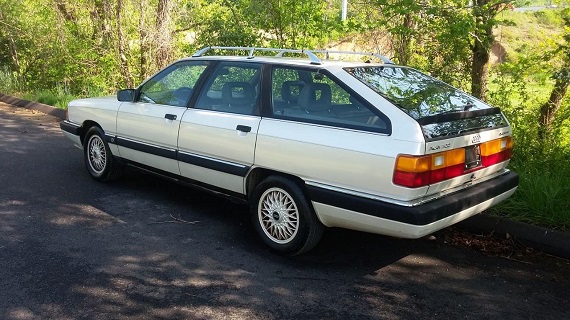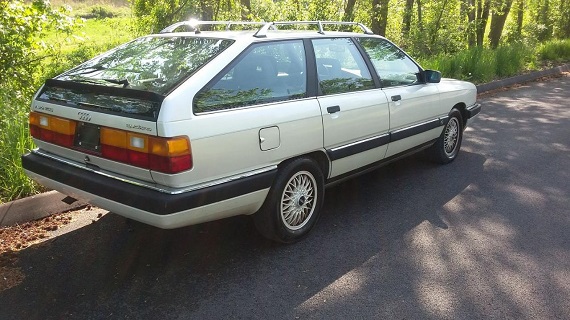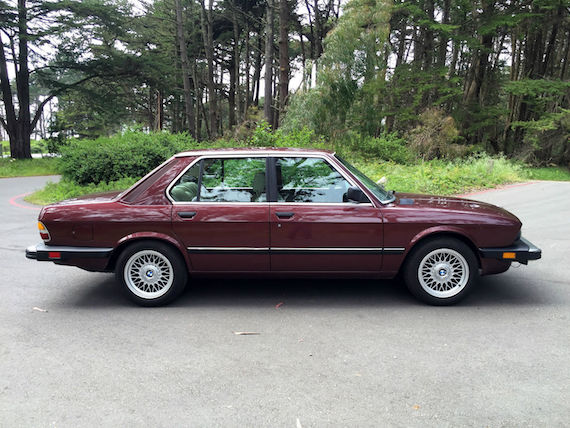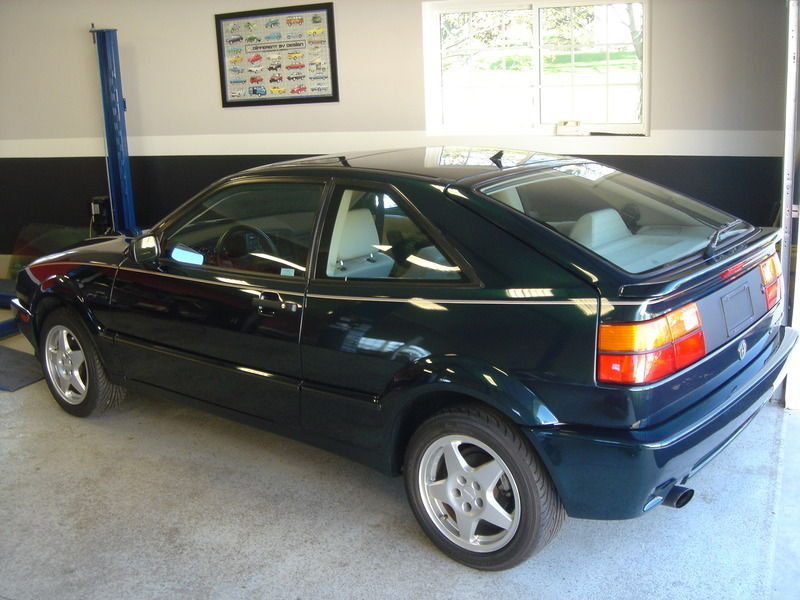Although the C3 Audi chassis enjoyed a reasonably long production run of 1984-1991, each year introduced changes that, while evolutionary, were notable and make each specific model year feel a little bit bespoke. The biggest change was the 1986 introduction of Audi’s all-wheel drive system of quattro to the large model range, making three distinct packages you could get the unique drivetrain in the luxury market. In the U.S. market, 1986 5000 quattros came only in “CS” spec and sedan – basically, fully loaded with only heated seats, Fuchs forged wheels and Pearlescent White Metallic paint as options. 1987 opened the options, but not with more gadgetry – the Avant, previously only available in front drive normally aspirated “S” form, joined the quattro lineup full time after being introduced about halfway through the 1986 model run. Alcantara also became a seldom-selected option. 1988 saw a very minor revision to the turbocharged “CS” models with new script badges in the rear and a few more options including heating for the rear seats and Velour interior options, but the big news was a new “5000S quattro” model, which came sans turbo and without the twin-bulb headlights, but shared the big brother turbo brakes and wheels. It was a smart move to drop the price on the quattro models, as the normal run 5000 reported outsold the 5000CS quattro by a measure of 4:1! 1989 was highlighted by a complete model refresh, moving to the European “100/200″ model designations. Accompanying the change were some new colors and minor alterations, such as more upscale-looking 15″x6” BBS wheels (color matched on Pearlescent White Metallic examples, just as the aero and Fuchs wheels had been). But inside an entirely new sweeping dashboard setup would be the standard on big Audis for the next 7 years. Instead of the previously confusing “S/CS” monikers, turbocharged models now wore the 200 badge, while normally aspirated models were 100s. The Alcantara and Velour options disappeared on the 200 models, which came only fully-loaded, and Fuchs were no longer an option. The 100 quattro shared many components with the 80/90 quattros from the same time, including the NG normally aspirated motor instead of the turbocharged MC1. 100s also ran the familiar small-chassis 4×108 bolt pattern with accompanying smaller brakes, but oldly Audi commissioned BBS to make a run of 15″x6″ wheels that matched the look of the 200’s wheels outwardly. Mechanically, otherwise there were few changes to either model, though as with the 80/90 quattros, the option to lock your own differential was now limited to the rear, and then speed limited to 15 m.p.h.. While 1990 saw few changes to the run overall, there was a change in motor in the 200. A rolling change saw the revised (and very short lived) MC2 replace the MC1. Twin knock sensors allowed engineers to run higher compression; coupled with a reground camshaft, lighter mass flywheel and smaller K24 turbo meant that the MC2 could run less boost and spool more quickly for a better driving experience, but ultimately the facts and figures say the power was unchanged. As always, top of the heap was the 200 quattro Avant, and they didn’t get any more expensive than when optioned with the Pearlescent White Metallic paint:
German Cars For Sale Blog Posts
One carmaker that I’ve always admired but has been somewhat of an unknown to those in the US is Citroën. Founded in 1919 by Andre Citroën, this was a company that seemingly could predict future automotive trends. Whether it was unitary body construction, front-wheel drive, semi-automatic gearboxes, independent suspension, swiveling headlamps or hydropneumatic suspension, Citroën could seemingly pick and choose from a list forward looking ideas and bring them to market years before the competition. There was one manufacturer in Germany that mirrored Citroën to an extent: NSU. In the mid 1960s, they brought to market a car you could mistake for being a 2016 model. The Ro80. This was a car light years ahead of its time, but had one fatal flaw: the engine. The twin rotor Wankel engine proved highly unreliable led the company down the path of financial ruin, leading Volkswagen to acquire the company in 1969 and merge it with Auto Union. These advanced machines are rarely seen on these shores, but this one for sale in The Netherlands is making a strong case for importation.
CLICK FOR DETAILS: 1973 NSU Ro80 on Mobile.de
Comments closed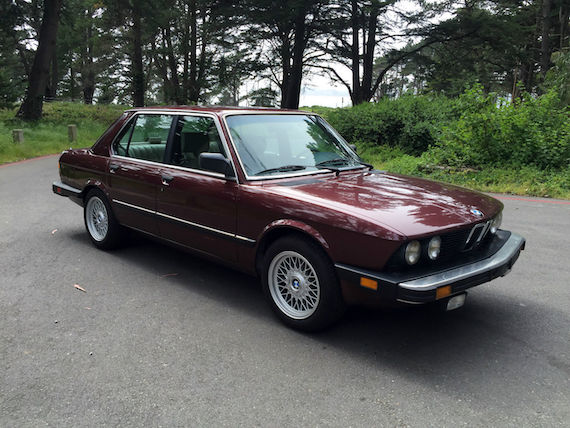
This beautiful Burgundy 528e is one of the nicer non-M E28s we’ve seen in a while. The red and brown tones come together to underscore what this model is all about. The eta-engined Bimmers of the late 80s were value judgments from the get-go – are you ok with going a little slower in exchange for torque and fuel mileage? If so, you’ll still get the handling and killer good looks of the E28 while being primed to crush long miles without heading to the gas station every few minutes like in my M5. There are some compromises to be made with this particular example as well, like accepting that the real mileage is unknown due to a replaced cluster and knowing there are a couple small spots of surface rust hiding in the Burgundy next to seams. The flip side is extremely conservative bidding on the no-reserve auction for this nice daily-driver quality E28.
Click for details: 1987 BMW 528e on eBay
1 CommentConsidering popular Volkswagen chassis for enthusiasts, it would be natural to equate the many generations of Volkswagen Golfs to BMW’s 3-series. Models like the legendary GTi 16V mimic the Munich brand in several ways, with high revving inline-4s, BBS wheels and the later models even sported quad round headlights. The models that followed plumped up a bit and went to sonorous 6-cylinders and even more recently turbocharging both has become the factory way. Following in that comparative logic, the Corrado SLC is more like the M5. It’s a bit more grown up, more refined – yet has an equal mystique and base of fans. For Volkswagen faithful, clean Corrados are like India was to the British Empire – the crown jewel of collectables. And no gems come to the market more brilliant than this basically new emerald-colored 1993:
